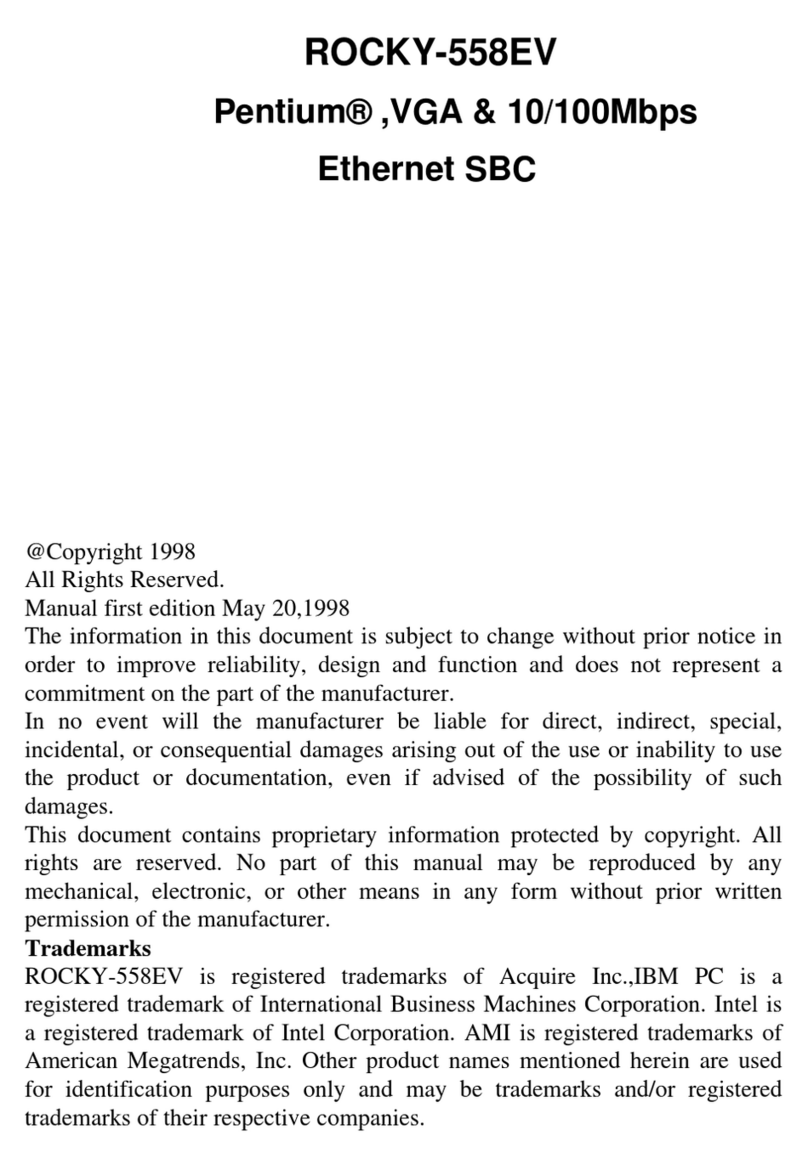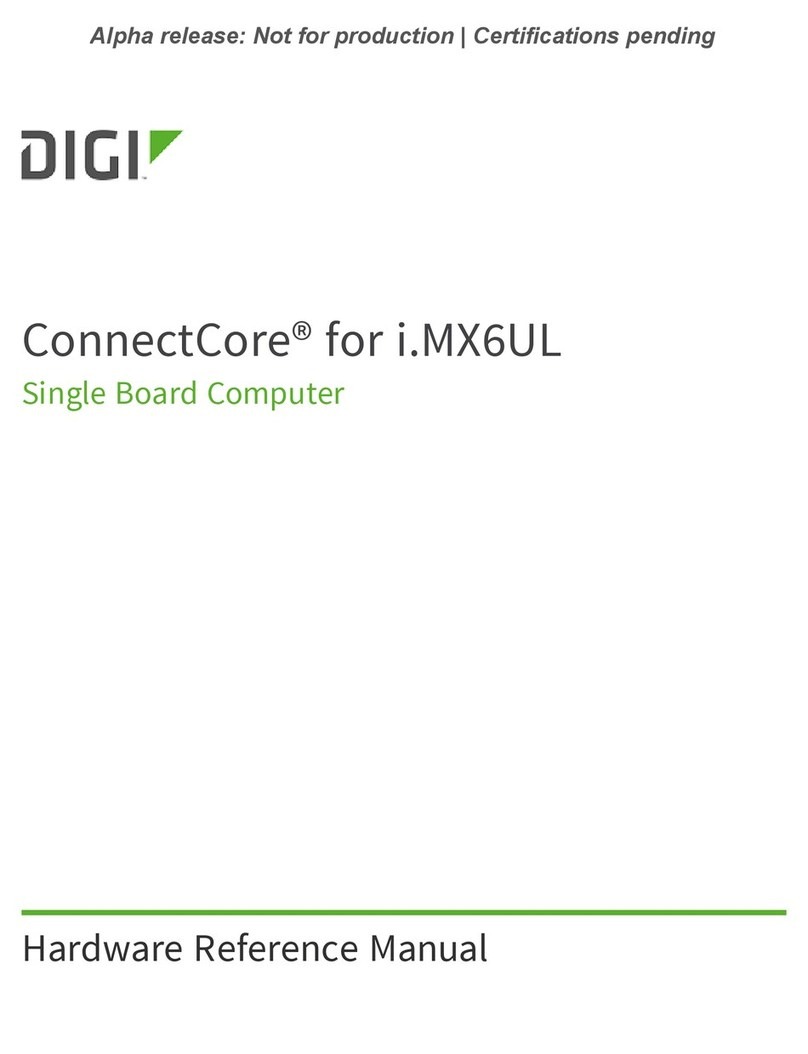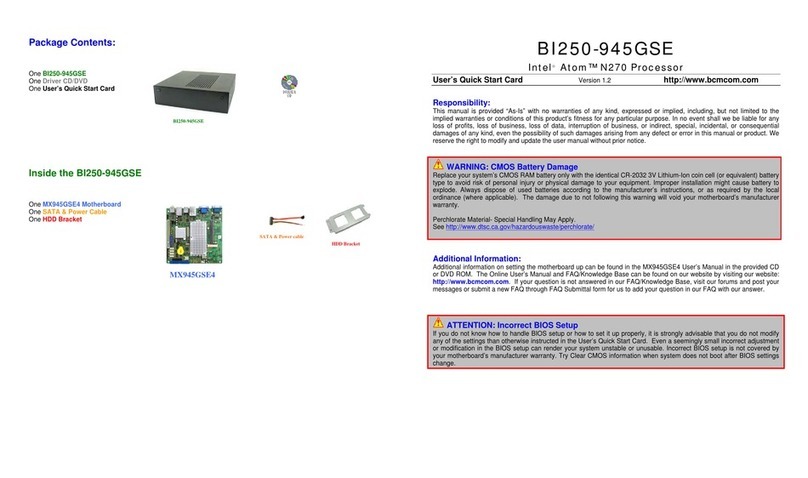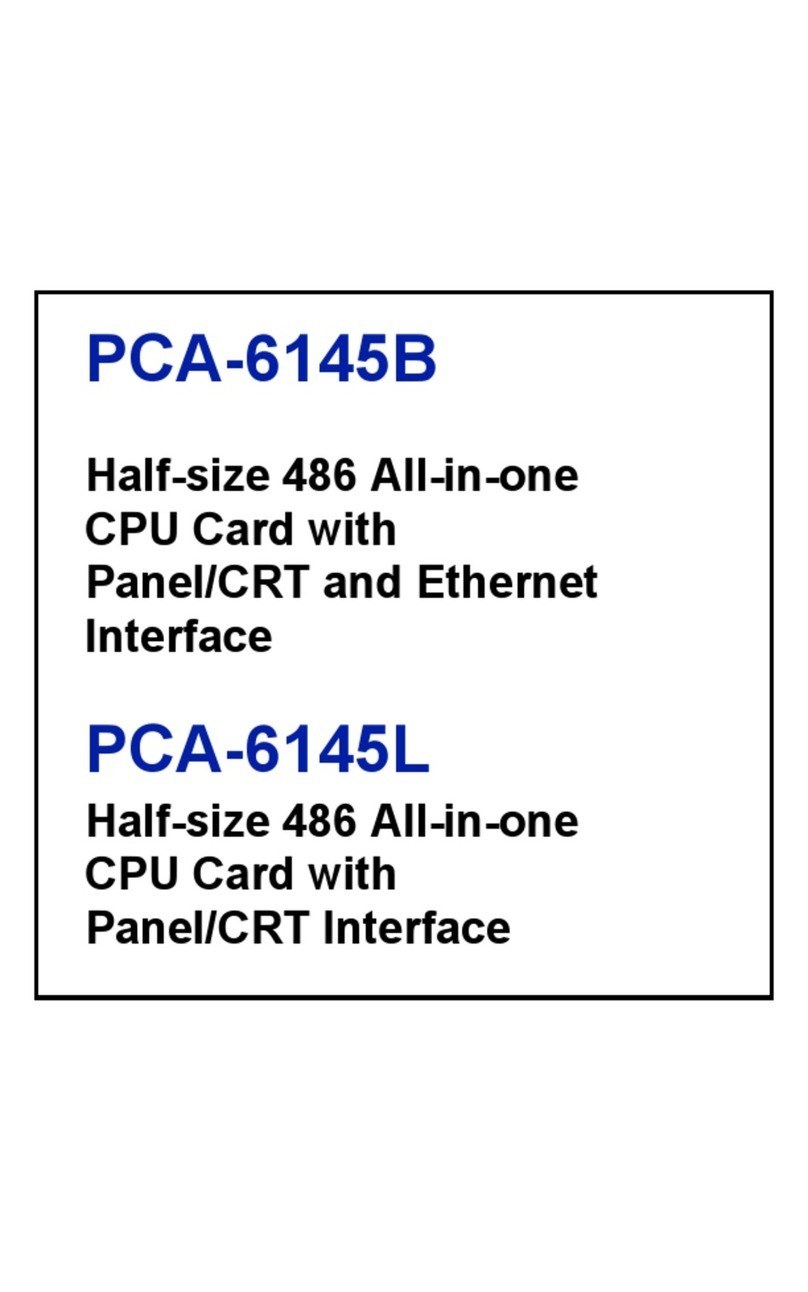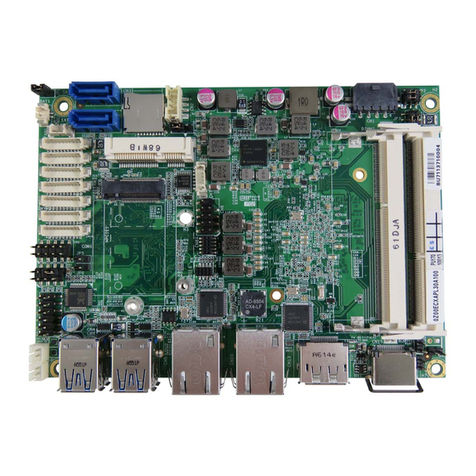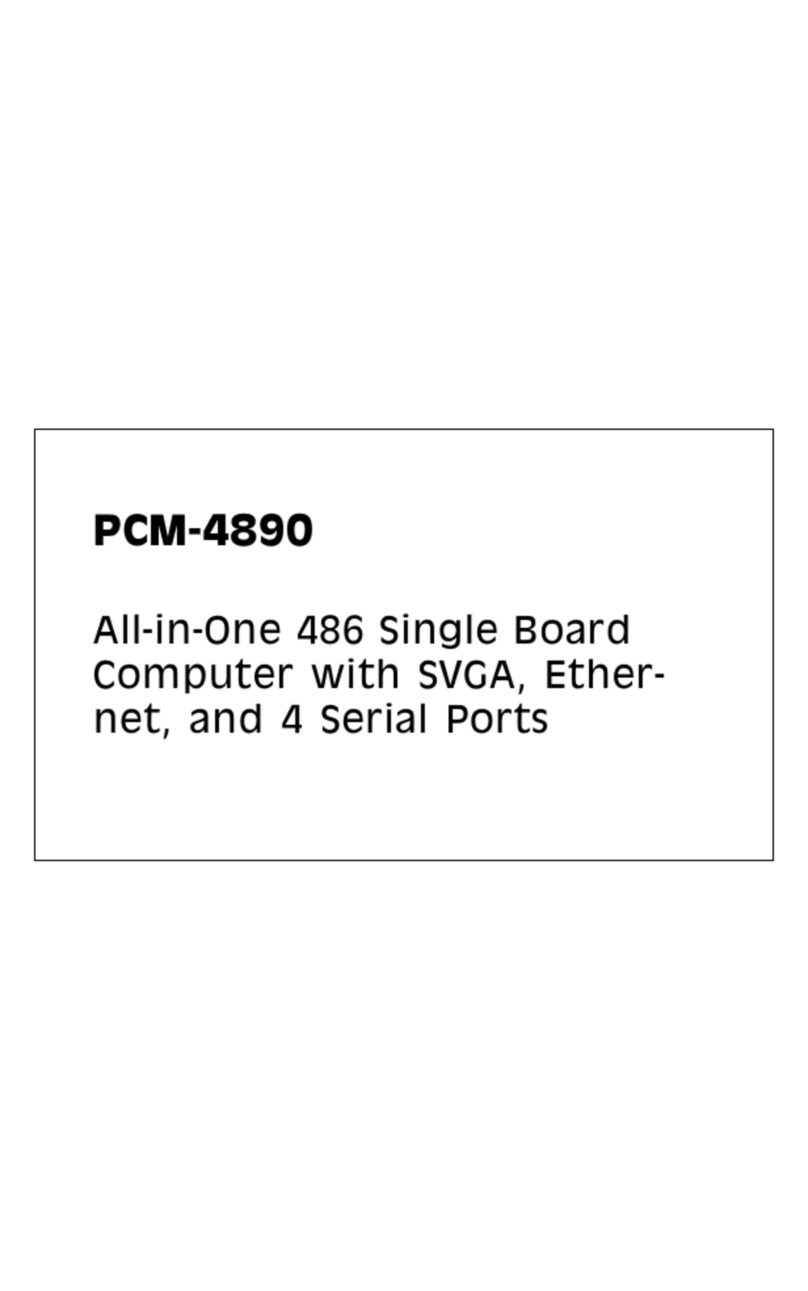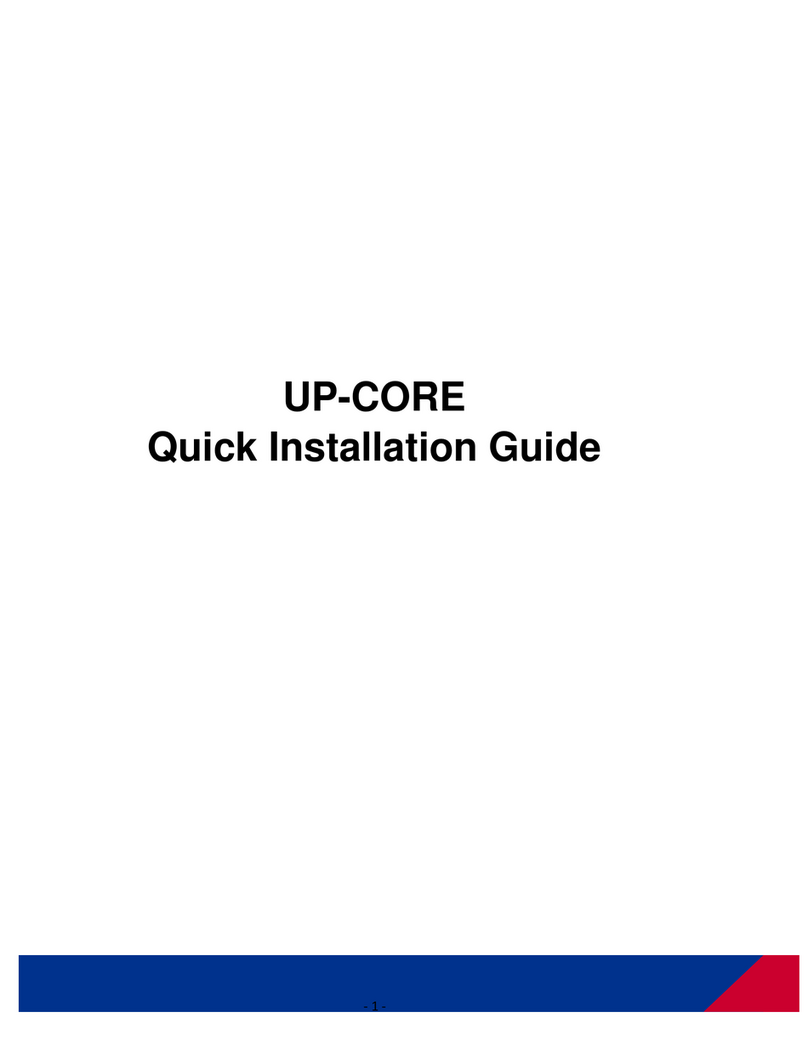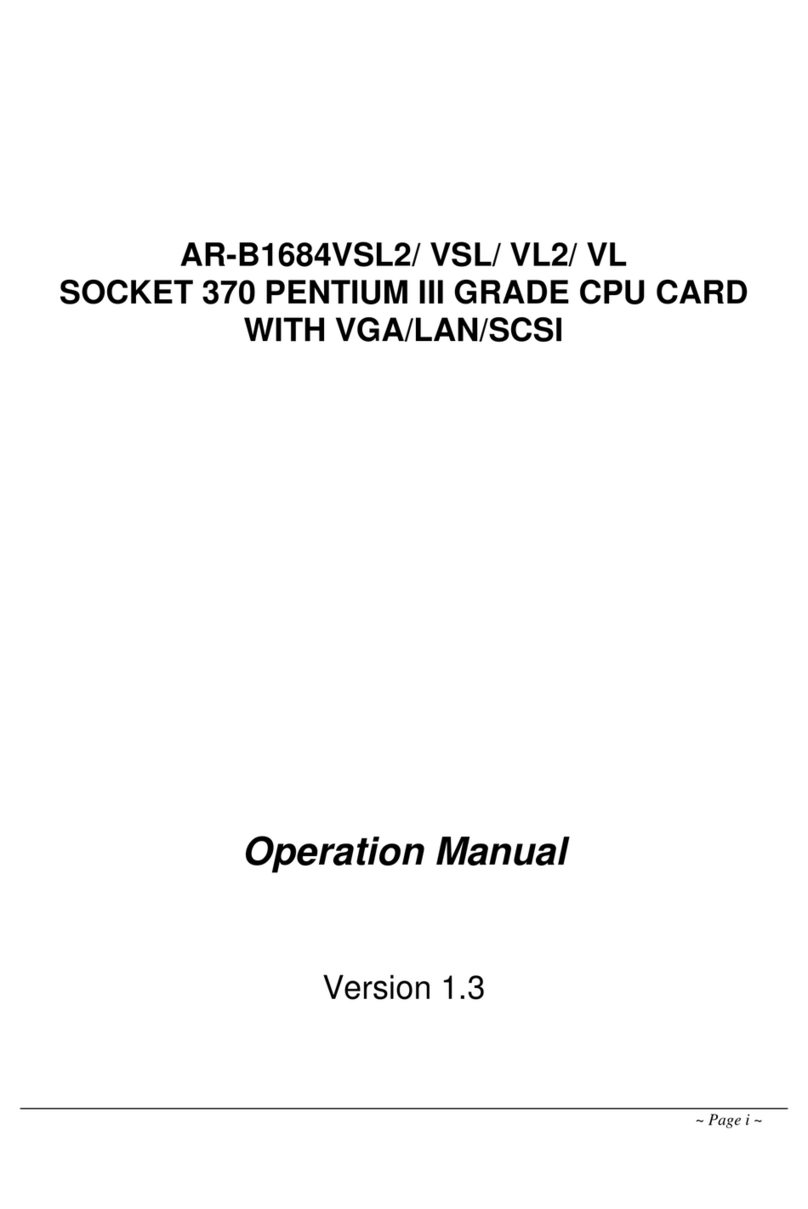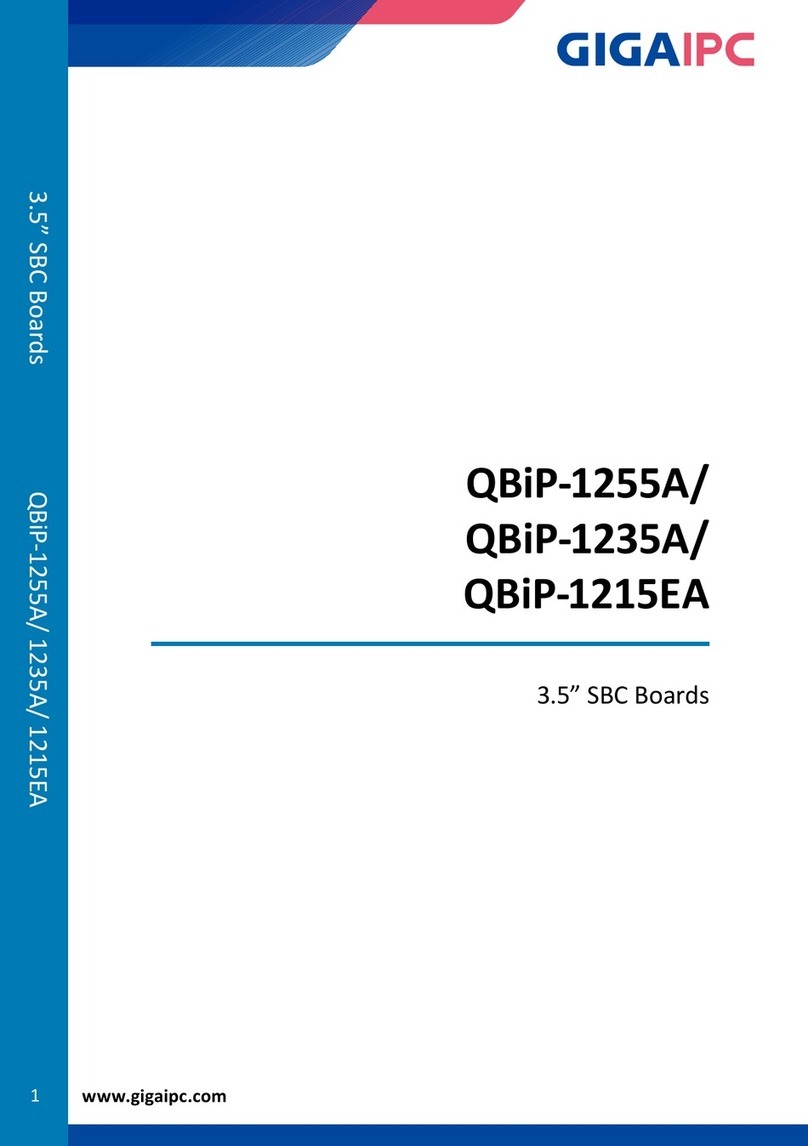MCCI Catena 4612 User manual

MCCI Corporation
3520 Krums Corners Road
Ithaca, New York 14850 USA
Phone +1-607-277-1029
Fax +1-607-277-6844
www.mcci.com
Catena 4612/4611 User Manual
Engineering Report 234001173
Rev A
Date: 2019-03-01
Copyright © 2019
All Rights Reserved

Catena 4612/4611 User Manual
Engineering Report 234001173 Rev A
- ii -
PROPRIETARY NOTICE AND DISCLAIMER
Unless noted otherwise, this document and the information herein disclosed are proprietary to MCCI
Corporation, 3520 Krums Corners Road, Ithaca, New York 14850 (“MCCI”). Any person or entity to
whom this document is furnished or having possession thereof, by acceptance, assumes custody thereof
and agrees that the document is given in confidence and will not be copied or reproduced in whole or in
part, nor used or revealed to any person in any manner except to meet the purposes for which it was
delivered. Additional rights and obligations regarding this document and its contents may be defined by
a separate written agreement with MCCI, and if so, such separate written agreement shall be controlling.
The information in this document is subject to change without notice, and should not be construed as a
commitment by MCCI. Although MCCI will make every effort to inform users of substantive errors, MCCI
disclaims all liability for any loss or damage resulting from the use of this manual or any software
described herein, including without limitation contingent, special, or incidental liability.
MCCI, TrueCard, TrueTask, MCCI Catena, and MCCI USB DataPump are registered trademarks of MCCI
Corporation.
MCCI Instant RS-232, MCCI Wombat and InstallRight Pro are trademarks of MCCI Corporation.
All other trademarks and registered trademarks are owned by the respective holders of the trademarks
or registered trademarks.
Copyright © 2019 by MCCI Corporation.
Document Release History
Rev A
2019-03-01
Initial Release

Catena 4612/4611 User Manual
Engineering Report 234001173 Rev A
- iii -
TABLE OF CONTENTS
1 Introduction .......................................................................................................................................... 5
2 Specifications and Features .................................................................................................................. 5
2.1 Additional Features....................................................................................................................... 7
3 Catena 4612/4611 Pinouts ................................................................................................................... 7
4 Hardware Requirements....................................................................................................................... 8
4.1 PinHeaders.................................................................................................................................... 8
4.2 1x04 Screw Terminals ................................................................................................................... 8
4.3 Antenna......................................................................................................................................... 9
4.4 Programming Requirements......................................................................................................... 9
4.4.1 ST-LINK/V2 in-circuit debugger/programmer....................................................................... 9
4.4.2 USB to Serial Cable..............................................................................................................10
5 Software Requirements ......................................................................................................................10
6 Assembly Instructions......................................................................................................................... 11
7 Configurations of Catena 4612 ...........................................................................................................13
7.1 Library Installation ......................................................................................................................13
7.2 Arduino IDE Setup.......................................................................................................................14
7.3 Programming Methods ...............................................................................................................16
7.3.1 ST-LinK................................................................................................................................. 16
7.3.2 DFU...................................................................................................................................... 18
7.4 Provisioning Steps....................................................................................................................... 21
7.5 TTN Registration Steps................................................................................................................ 21
LIST OF TABLES
Table 1 Difference between 4612 and 4611................................................................................................. 6
Table 2 Antenna Specification ...................................................................................................................... 9
Table 3 USB to Serial Connection................................................................................................................ 13
Table 4 Catena 4612 to STLink connection.................................................................................................17
LIST OF FIGURES
Figure 1 Catena 4612 .................................................................................................................................... 5

Catena 4612/4611 User Manual
Engineering Report 234001173 Rev A
- iv -
Figure 2 Catena 4612/4611 Description ....................................................................................................... 6
Figure 3 Catena 4612/4611 Pinout ............................................................................................................... 8
Figure 4 12-pin & 16-pin Male Headers........................................................................................................ 8
Figure 5 1x04 Screw Terminals ..................................................................................................................... 9
Figure 6 Whip Antenna ................................................................................................................................. 9
Figure 7 ST Link Programmer ...................................................................................................................... 10
Figure 8 USB to Serial Cable........................................................................................................................10
Figure 9 Catena 4612 after soldering components.....................................................................................11
Figure 10 Catena 4612 with Battery ...........................................................................................................12
Figure 11 Catena 4612 Serial Configuration ...............................................................................................12
Figure 12 Cloning libraries using the script................................................................................................. 14
Figure 13 BSP Search................................................................................................................................... 15
Figure 14 BSP Installation ........................................................................................................................... 15
Figure 15 BSP Installed................................................................................................................................ 16
Figure 16 Catena 4612 connection with PC using STLink Debugger..........................................................16
Figure 17 Catena 4612 connection with ST Link programmer.................................................................... 17
Figure 18 Configuration for upload using STLink programmer................................................................... 18
Figure 19 Catena 4612 DFU Mode Connection........................................................................................... 18
Figure 20 DFU mode Example.....................................................................................................................19
Figure 21 Zadig Device Selection ................................................................................................................ 19
Figure 22 Zadig driver replacement............................................................................................................ 20
Figure 23 Configuration for upload using DFU mode ................................................................................. 20
LIST OF SEQUENCE DIAGRAMS
No table of figures entries found.

Catena 4612/4611 User Manual
Engineering Report 234001173 Rev A
- 5 -
1Introduction
The MCCI Catena® 4612 and 4611 is a complete single-board IoT device for LoRaWAN™
technology projects.
Based on the Murata CMWX1ZZABZ-078, and designed to be compatible with the Adafruit
Feather family of development boards and accessories, the Catena 4612/4611 is a great
platform for LoRaWAN investigation and deployment. It works well with The Things Network, or
any LoRaWAN 1.0 or 1.1 network in the 865 to 923 MHz range.
Lightweight and small (roughly 2" by 0.9"), the 4612/4611 needs no external components to
measure and send temperature, pressure, humidity, and Lux, powered from USB or two AAA
cells.
Because of the embedded FRAM, the Catena 4612/4611 fully meets the requirements of
LoRaWAN 1.1, without worrying about EEPROM wear out or wear-leveling, both for ABP and
OTAA.
Figure 1 Catena 4612
2Specifications and Features
The specifications and features of Catena 4612/4611 are given below:
The difference between 4611 and 4612 are given in Table 1

Catena 4612/4611 User Manual
Engineering Report 234001173 Rev A
- 6 -
Table 1 Difference between 4612 and 4611
Specification
Catena 4612
Catena 4611
Boost regulator IC
MCP16252
MCP16251
Boost Regulator
Can be controlled
Always On
Behaviour
VDD on the I/O ports change
based on A0 (either 0 or 1)
VDD is always 3.3V
Uses
Power consumption is less,
since it can be controlled
Low power mode
Murata LoRaWAN module
Semtech SX1276 LoRa radio
STM32L082 CPU (Cortex M0+, 32 MHz, 192K flash, 20K RAM)
High quality RF engineering
Certified for US and EU
Compatible with IN866, AS923, AU921 bands
Figure 2 Catena 4612/4611 Description
Integrated sensors
Pressure
Temperature
Humidity
Lux

Catena 4612/4611 User Manual
Engineering Report 234001173 Rev A
- 7 -
2.1 Additional Features
Powered from primary (disposable) batteries (such as 2x AAA cells)
30uA current draw in standby
8K bytes FRAM for LoRaWAN provisioning info and frame counters -- power can be removed
completely without requiring a new join to the network, and without losing uplink and downlink
count values (required for LoRaWAN 1.1)
1M byte SPI Flash for bulk data storage, future FUOTA firmware storage, etc.
Software-controlled boost converter allows dynamically raising voltage to 3.3V for analog
measurement and powering internal sensors
USB or SWD for download and debug
Pin-compatible with Adafruit Feather M0 family of boards (some limitations because the of
functional differences between the Murata module and the Atmel SAMD21 CPU used in the
Feather M0)
Arduino-compatible
Provisions for screw terminals for pulse, analog or digital I/O
Whip, u.FL, or SMA antenna
Open source hardware and software (https://github.com/mcci-catena)
MCCI provides a full Arduino board-support package, available here.
MCCI also provides libraries to allow rapid prototyping and experimenting, including an open-
source LoRaWAN stack that supports the EU868, US915, AS923, AU921 and IN866 regional plans.
ST Micro tools may also be used.
The Catena 4612 works well with and is tested with The Things Network (an open-source, user-
owned IoT network based on LoRaWAN); but can be used with any LoRaWAN-compatible
network.
3Catena 4612/4611 Pinouts
Catena 4612/4611 Pinout is given below:

Catena 4612/4611 User Manual
Engineering Report 234001173 Rev A
- 8 -
Figure 3 Catena 4612/4611 Pinout
4Hardware Requirements
4.1 PinHeaders
12-pin & 16-pin male headers (123001009 & 12301011) have a pitch of 0.1” (2.54mm).
Figure 4 12-pin & 16-pin Male Headers
4.2 1x04 Screw Terminals
The 1x4 screw terminal blocks (123001012) has a pitch of 0.1” (2.54mm), and can be used as an
alternative to standard male or female headers of 0.1”. They help in connecting external sensors to the
4612.

Catena 4612/4611 User Manual
Engineering Report 234001173 Rev A
- 9 -
Figure 5 1x04 Screw Terminals
4.3 Antenna
Whip Antenna, u.FL and SMA Antennas can be used. The antenna specifications are shown in Table 2
Figure 6 Whip Antenna
Table 2 Antenna Specification
Parameters
Reference
US Version
EU Version
IN Version
AU Version
AS Version
Wire Color
Yellow
Green
Blue
Yellow
Yellow
Reference Number
123001007
123001069
123001070
123001007
123001007
Wire length
L1
88.6
84.2
88.9
82
82
Tolerance
-
+/- 0.3 mm
+/- 0.3 mm
+/- 0.3 mm
+/- 0.3 mm
+/- 0.3 mm
Board thickness
W1
1.5748
1.5748
1.5748
1.5748
1.5748
Tin length
L2
3 mm
3 mm
3 mm
3 mm
3 mm
Tin tolerance
-
+/- 0.03 mm
+/- 0.03 mm
+/- 0.03 mm
+/- 0.03 mm
+/- 0.03 mm
Slop from soldering
L3
1.5 mm
1.5 mm
1.5 mm
1.5 mm
1.5 mm
Minimum length
-
80.9
80.9
85.6
80.9
80.9
Maximum length
-
82.9
82.9
86.6
82.9
82.9
Typical length
L4
81.9
81.9
87.6
81.9
81.9
Minimum f
-
903.83 MHz
903.83 MHz
855.33 MHz
915 MHz
920 MHz
Maximum f
-
928.80 MHz
928.80 MHz
875.87 MHz
928 MHz
925 MHz
Typical f
-
915 MHz
915 MHz
866 MHz
921 MHz
923 MHz
4.4 Programming Requirements
4.4.1 ST-LINK/V2 in-circuit debugger/programmer
The ST-LINK/V2 (123001120) is an in-circuit debugger and programmer for the STM8 and STM32
microcontroller families. The single wire interface module (SWIM) and JTAG/serial wire debugging (SWD)
interfaces are used to communicate with any STM8 or STM32 microcontroller located on an application
board.

Catena 4612/4611 User Manual
Engineering Report 234001173 Rev A
- 10 -
Figure 7 ST Link Programmer
4.4.2 USB to Serial Cable
USB to Serial Cable (123001121) is used for Configuring the device with TTN and also for
monitoring the device performance on the Serial Monitor.
Figure 8 USB to Serial Cable
Note: The Serial cable configurations are mentioned in the Table 2
5Software Requirements
To proceed with Catena 4612/4611 setup and test procedure, the below software tools are required.
Arduino IDE for windows can be downloaded from below link:
ohttps://www.arduino.cc/en/Main/Software
ST-Link Debugger driver for windows can be downloaded from the link below:
ohttps://www.st.com/en/development-tools/st-link-v2.html
USB to Serial converter for windows
Zadig tool is required for programming Catena 4612 the tool can be downloaded from the link
below:
ohttps://zadig.akeo.ie
Basic libraries required
oCatena-Arduino-Platform

Catena 4612/4611 User Manual
Engineering Report 234001173 Rev A
- 11 -
oCatena-mcciadk
oarduino-lorawan
oarduino-lmic
oBH1750
oAdafruit_BME280_Library
oAdafruit_FRAM_I2C
oAdafruit_Sensor
6Assembly Instructions
1) Catena 4612/4611 board assembling procedures are listed below:
a. Attach the 12-pin & 16-pin Male Headers on JP1 and JP2 of Catena 4612/4611 board
respectively.
i. Solder one or two posts on each strip, to tack the header in place
ii. Adjust the vertical and horizontal alignment
iii. Solder the remaining posts for reliable electrical contact
b. Trim excess length of the 16-pin header in the area of screw terminals.
c. Solder the Whip antenna as per the Antenna Specification mentioned in Table 2.
d. Attach the 1x04 Screw Terminals on JP3 and JP4 respectively.
i. Solder one post
ii. Adjust for proper alignment and good cosmetics
iii. Solder the remaining posts
NOTE: Catena 4610 Base do not require male pin headers and screw terminals to be soldered (only
whip antenna is sufficient for base board). However, user can solder them based on their setup
requirement.
Figure 9 Catena 4612 after soldering components
e. Connect the Battery to the X3 of the board.

Catena 4612/4611 User Manual
Engineering Report 234001173 Rev A
- 12 -
Figure 10 Catena 4612 with Battery
(Note: The orange plastic seal from the BME–280 (U1) should be removed for proper
operation. This seal is intended for protection during manufacturing)
2) Catena 4612/4611 Serial connection.
User can prefer Generic Serial for Serial Interface when USB cable is not used in the setup.
MCCI preferred using USB to Serial Cable TTL-232R-RPI and it has been used for Serial
monitor. The color code and the pin configuration detail are listed in the Table 2
Figure 11 Catena 4612 Serial Configuration

Catena 4612/4611 User Manual
Engineering Report 234001173 Rev A
- 13 -
Table 3 USB to Serial Connection
Catena4612 (JP1)
USB - Serial cable (color)
GND
Black
D0_RX
Orange
D1_TX
Yellow
7Configurations of Catena 4612
7.1 Library Installation
Catena 4612 simple sketch requires the following libraries:
Catena-Arduino-Platform
Catena-mcciadk
arduino-lorawan
arduino-lmic
Adafruit_BME280_Library
BH1750
Adafruit_FRAM_I2C
Adafruit_Sensor
The above libraries can be cloned from https://github.com/mcci-catena or by executing the shell script
“git-boot.sh” in the directory.
It's easy to run, provided you're on Windows, macOS, or Linux, and provided you have git installed. We
tested on Windows with git bash from https://git-scm.org, on macOS 10.11.3 with the git and bash
shipped by Apple, and on Ubuntu 16.0.4 LTS (64-bit) with the built-in bash and git from apt-get install git.
Refer the Figure 12 to clone using the script git-boot.sh.

Catena 4612/4611 User Manual
Engineering Report 234001173 Rev A
- 14 -
Figure 12 Cloning libraries using the script
7.2 Arduino IDE Setup
Now follow the below steps to upload the test sketch using Arduino IDE:
1. Open the Arduino IDE. Go to File>Preferences>Settings. Add
“https://github.com/mcci-catena/arduino-
boards/raw/master/BoardManagerFiles/package_mcci_index.json”
to the list in Additional Boards Manager URLs.
2. If you already have entries in that list, use a comma (,) to separate the entry you're adding from
the entries that are already there.
3. Next, open the board manager. Tools>Board:...Search for MCCI’s BSPs
4. Install the latest BSP for MCCI Catena STM32 to add support for Catena 4612 in Arduino IDE.
5. MCCI Catena STM32 Boards should be installed from the Boards Manager.
6. Once the board has been installed, Catena 4612 board has to be selected under MCCI Catena
STM32 Boards.

Catena 4612/4611 User Manual
Engineering Report 234001173 Rev A
- 15 -
Figure 13 BSP Search
Figure 14 BSP Installation

Catena 4612/4611 User Manual
Engineering Report 234001173 Rev A
- 16 -
Figure 15 BSP Installed
7. Enable USB Serial in the serial interface menu from the Tools tab.
8. Choose your desired system clock and LoRaWAN region
9. Compile and Upload your sketch
7.3 Programming Methods
Catena 4612 programming includes two methods
I. DFU
II. ST-Link
7.3.1 ST-LinK
Catena 4612 uses ST-Link V2 programmer for programming the firmware. Below is the connection
between 4612 and ST-Link programmer
Figure 16 Catena 4612 connection with PC using STLink Debugger

Catena 4612/4611 User Manual
Engineering Report 234001173 Rev A
- 17 -
Pin configurations of the ST-Link debugger with Catena 4612 are mentioned in Table 4
Table 4 Catena 4612 to STLink connection
Catena 4612 ST-Link connection
Pin Names
ST-Link
Pin Numbers
4612
Pin Numbers
+VDD
Pin 1
JP1 - 15
GND
Pin 3
JP1 - 13
SWDIO
Pin 7
JP3 - 9
SWCLK
Pin 9
JP3 - 8
nRST
Pin 15
JP1 - 16
Figure 17 Catena 4612 connection with ST Link programmer
Before uploading the code select the following options from Arduino IDE.
TOOLS --> UPLOAD METHOD - STLink" && PROGRAMMER - "STLink (STM32L0)"

Catena 4612/4611 User Manual
Engineering Report 234001173 Rev A
- 18 -
Figure 18 Configuration for upload using STLink programmer
7.3.2 DFU
1. Program the Catena 4612 using DFU mode, this mode requires Zadig tool the download link is
mentioned above.
2. Once the tool is downloaded, BOOT0 and +VDD pins should be Shorted using the jumper wire
Figure 19 Catena 4612 DFU Mode Connection

Catena 4612/4611 User Manual
Engineering Report 234001173 Rev A
- 19 -
Figure 20 DFU mode Example
3. Now reboot Catena 4612 using USB cable.
4. On the Zadig terminal - Select Options -> List All devices as shown
Figure 21 Zadig Device Selection
5. Select STM32 BOOTLOADER from the device dropdown
6. Select WinUSB (v6.1.7600.16385) as new driver
7. Click Replace Driver

Catena 4612/4611 User Manual
Engineering Report 234001173 Rev A
- 20 -
Figure 22 Zadig driver replacement
8. Before uploading the code select the following options from Arduino IDE.
TOOLS --> UPLOAD METHOD - DFU" && PROGRAMMER - "STM 32 BOOTLOADER"
Figure 23 Configuration for upload using DFU mode
Now the Sketch can be compiled and uploaded using DFU mode.
This manual suits for next models
1
Table of contents
Popular Single Board Computer manuals by other brands

ADLINK Technology
ADLINK Technology NuPRO-851 user manual
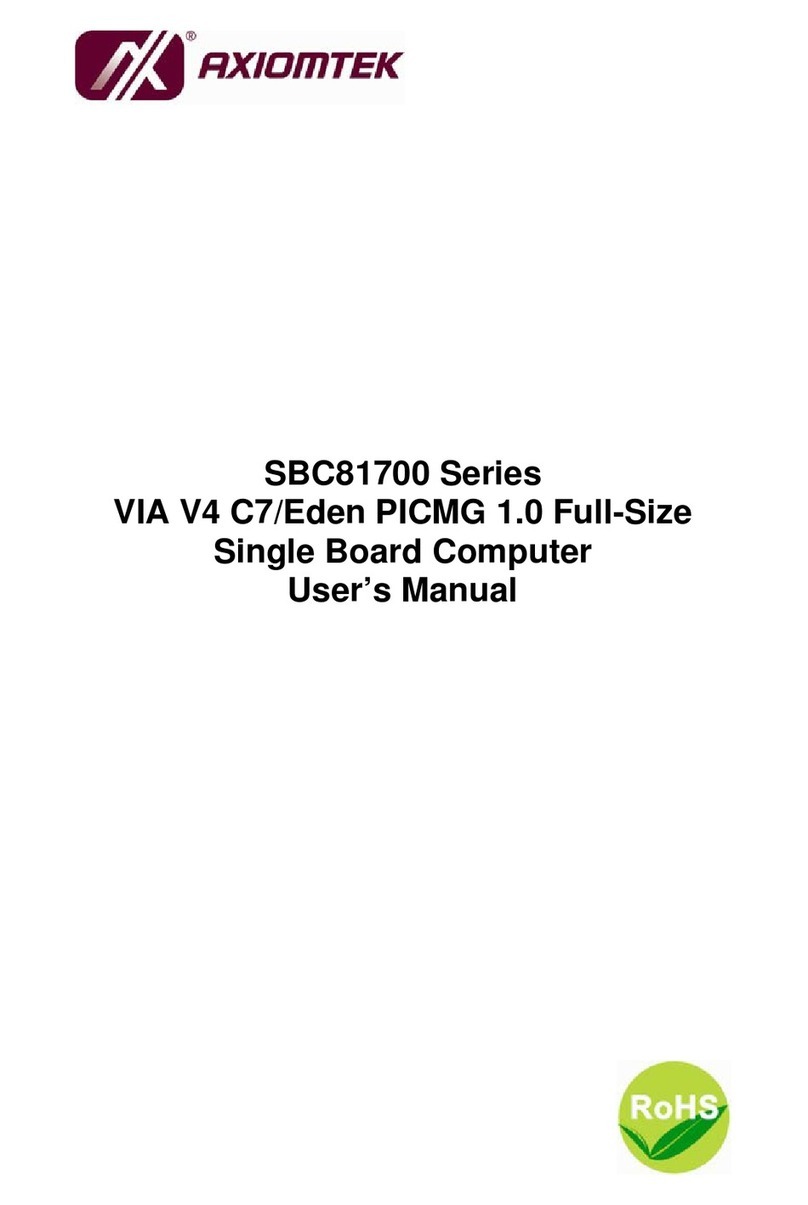
AXIOMTEK
AXIOMTEK SBC81700 Series user manual
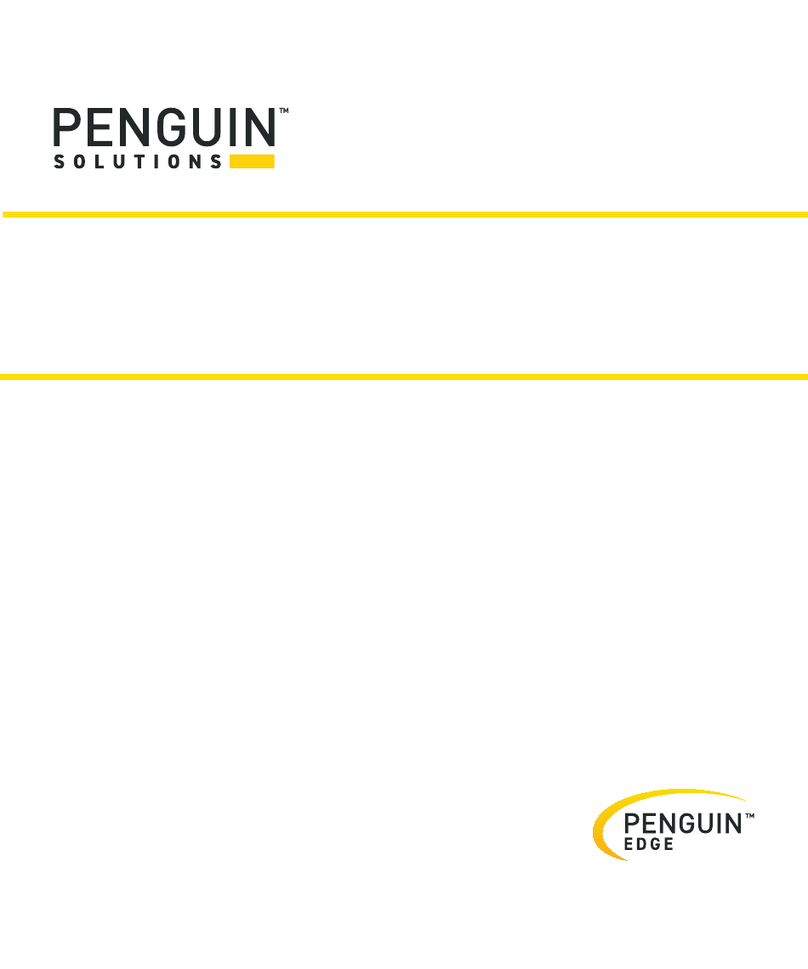
Penguin Edge
Penguin Edge MVME250 Series Installation and use manual

ADLINK Technology
ADLINK Technology ReadyBoard 850 user manual

ADLINK Technology
ADLINK Technology ReadyBoard 620 Reference manual
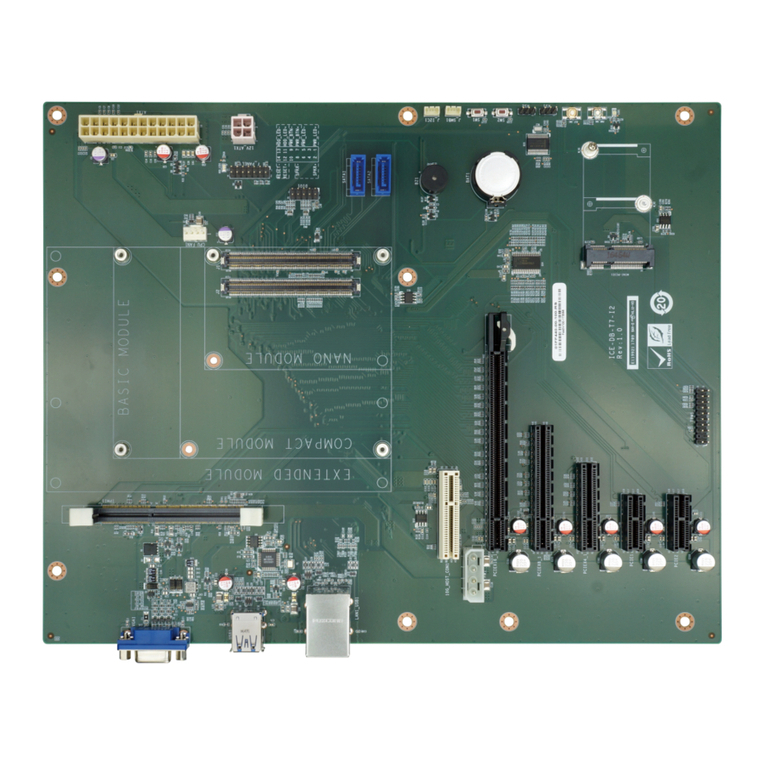
IEI Technology
IEI Technology ICE-BDE-T7 Quick installation guide
